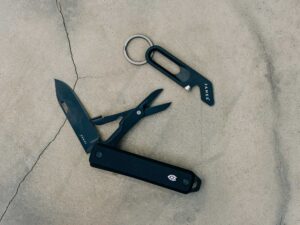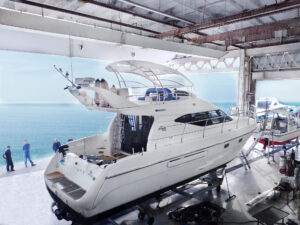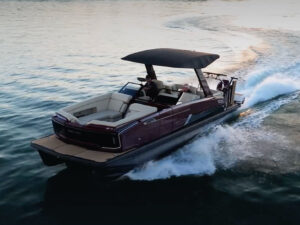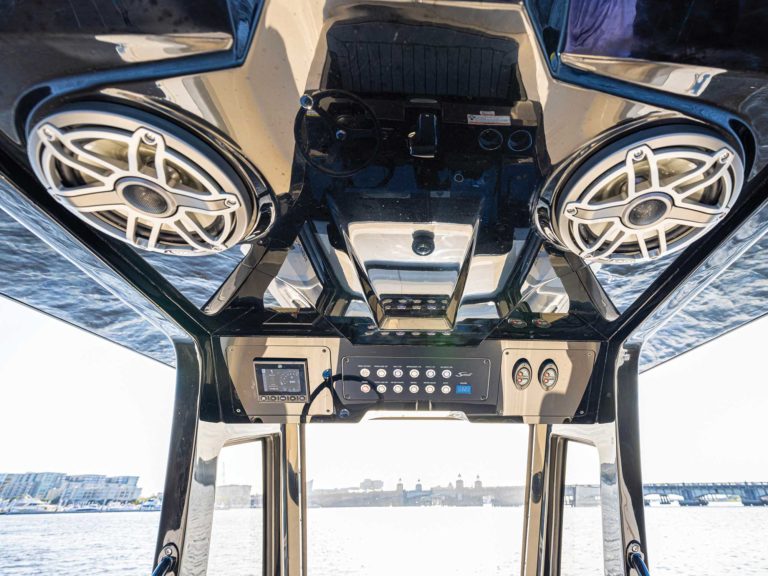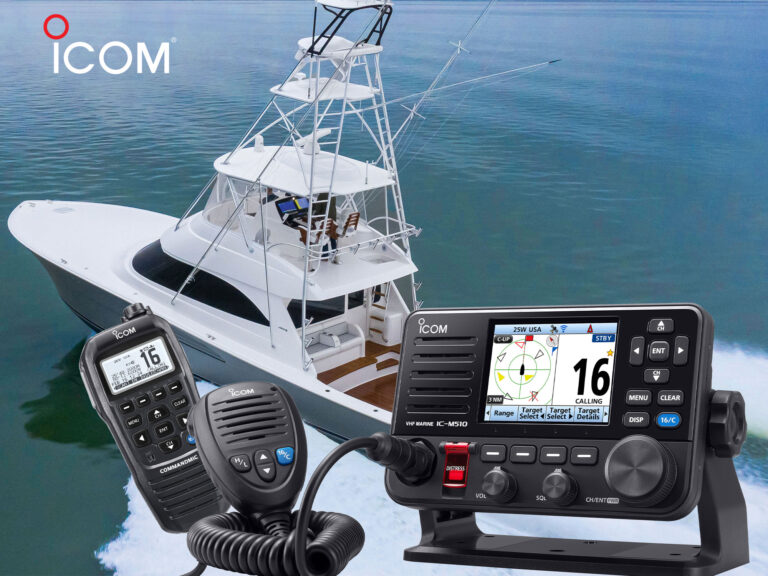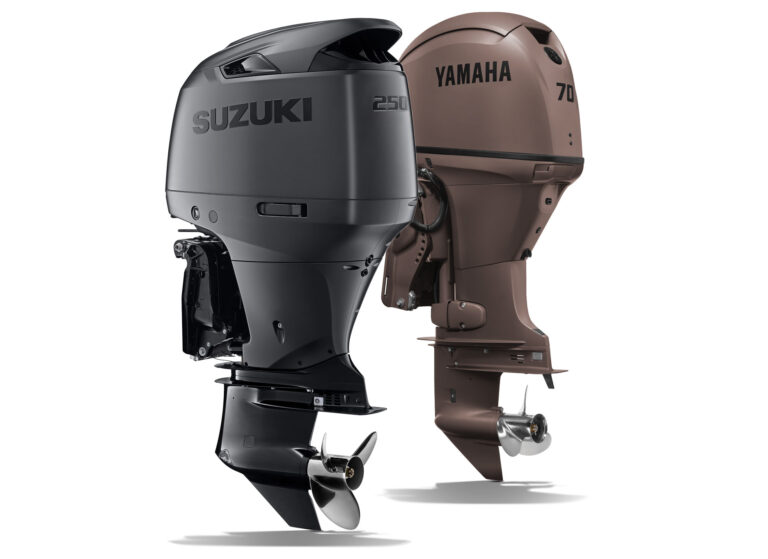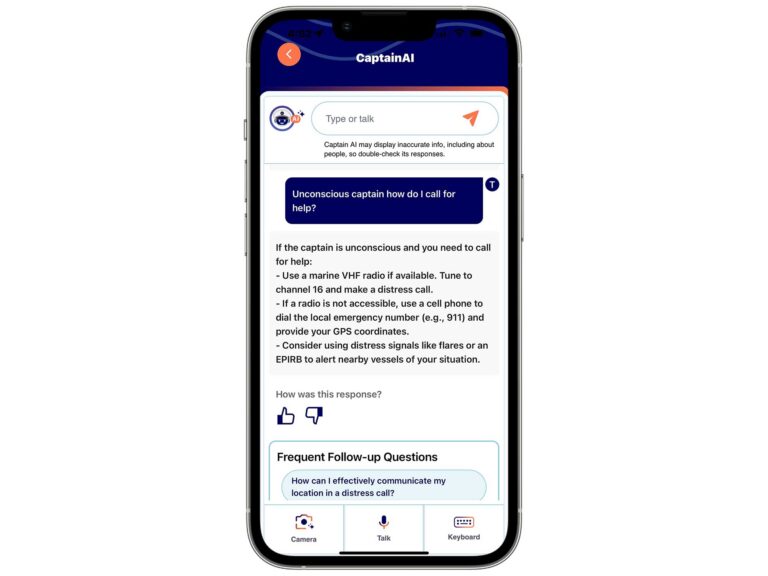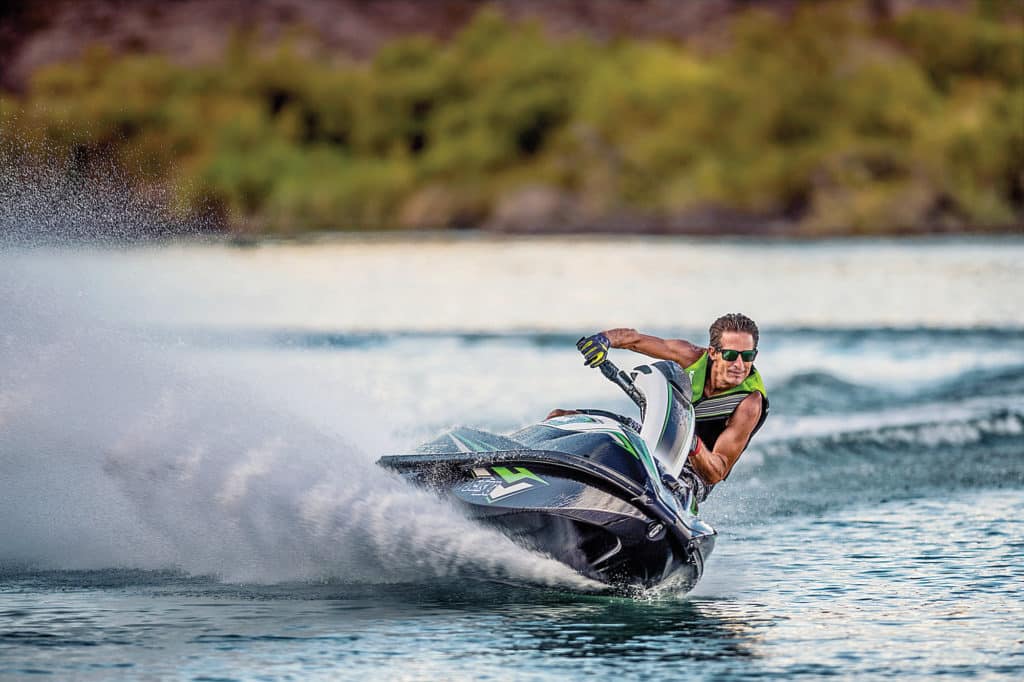
Kawasaki’s stand-up Jet Ski started the personal watercraft craze, but the boom in easier-to-ride sit-down models pushed stand-ups out of the spotlight. Later, stricter two-stroke emissions laws seemingly doomed the craft to extinction in 2011. Now the legend is reborn. The new Jet Ski SX-R resembles the craft that preceded it but looks like it’s been hitting the gym during its five-year hiatus. Now nearly 8 feet 9 inches in length and 30 inches wide, the craft is over a foot longer than the previous model, a stat that is exaggerated by a new, noticeably swollen nose area. There’s also considerably more hull depth below the bond line, and a wider 34-by-16-inch rider tray.
The biggest news may be the four-stroke engine that ultimately facilitated the craft’s comeback. Borrowed directly from Kawasaki’s STX-15F runabout, the naturally aspirated, 1,498 cc four-cylinder is rated at 160 hp, twice the power Kawasaki previously offered in a stand-up model.
Digital fuel injection provides easier starting, and the 60 mm mechanical throttle body and resin intake manifold improve throttle response and power delivery through the engine’s full rpm range.
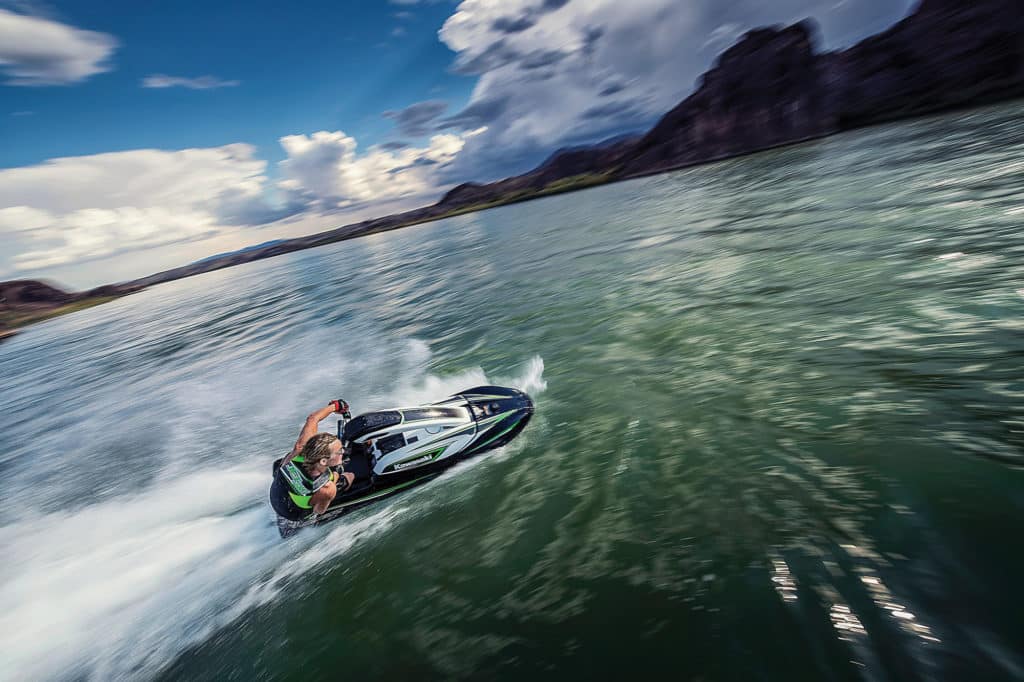
Even with the craft’s now-hefty 551-pound weight, the power plant allows the SX-R to best Kawasaki’s flagship 310 hp Ultra 310R out of the hole. Kawasaki claims it beats the previous stand-up model by a full 19 meters in a 50-meter drag race. I believe it. The SX-R accelerates instantly, with virtually none of the bow rise or porpoising typical of a stand-up-style craft. Top speed was an even 60 mph with my 155 pounds in the tray.
As to a stand-up’s legendary handling and agility, the SX-R hull tracks more precisely, and more aggressively, than ever before. Runabout-style sponsons have been added toward the stern to lock in the back end, virtually eliminating the chance of a spinout. As before, I found the craft responded best to a strong inside lean, but in an unexpected twist, I found the hull could also be turned quite flat for those looking for a tamer ride. Just choose one style or the other and shift your weight accordingly; I powered into an aggressive corner without committing and was quickly flung as the craft nimbly pivoted beneath my feet. The V-shaped bottom also proved better at handling rough water.
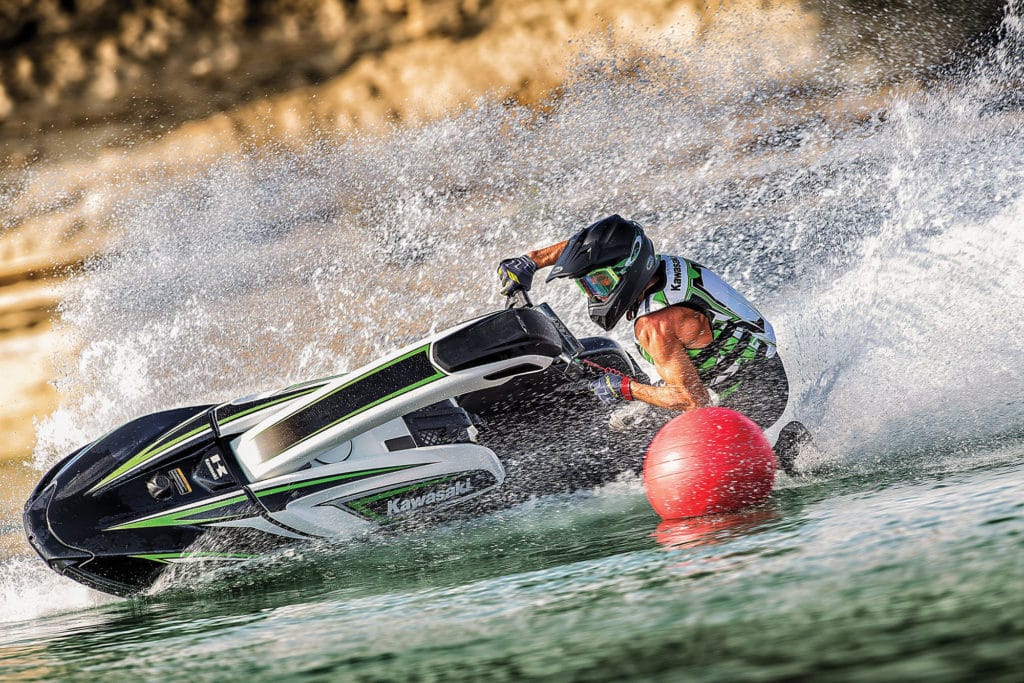
High Points
* While more powerful and agile, the SX-R also manages to be more beginner-friendly. Stability is far better at speed, spinouts have been all but eliminated, and the added buoyancy makes it easier to start in deep water.
* Engine location — low in the hull and as far aft as possible — helps the hull tackle waves with less of a jolting impact to the driver.
* Integrated splash deflectors reduce the amount of unwanted spray coming over the bow.
* Magnetic, theft-prevention key, fuel and engine warning lights, and shallow storage nook atop the hood cover are all welcome additions.
Low Points
* While far more buoyant once you get to your knees, the higher waterline makes it a little more of a workout to repeatedly haul yourself aboard after falls.
* Likewise, the sides of the deck fins receive padding, but the tops no longer do. My elbows missed the cushioning during reboarding attempts.
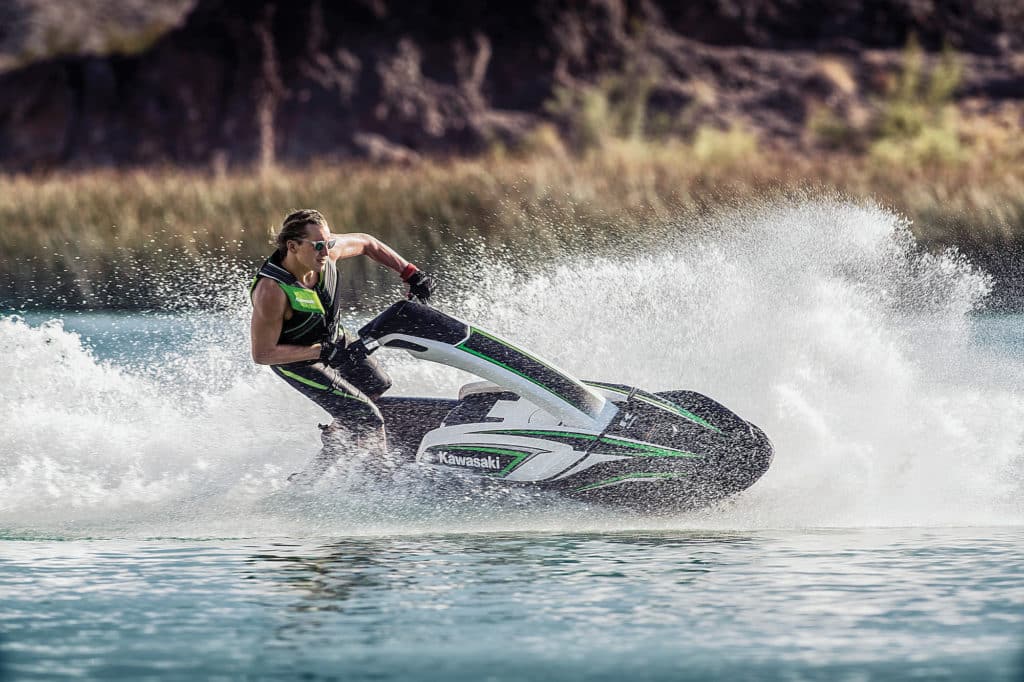
Toughest Competitor
There’s only one from a major OEM, Yamaha‘s SuperJet ($8,499). At only 7 feet 4 inches in length and 306 pounds, the SuperJet is far more playful than the SX-R and yet still carves with a relatively predictable and aggressive inside lean. The craft’s 701 cc two-stroke engine, however, runs afoul of current emissions standards, making the craft available for competition use only.
Price: $9,999
Available Power: Jet Drive
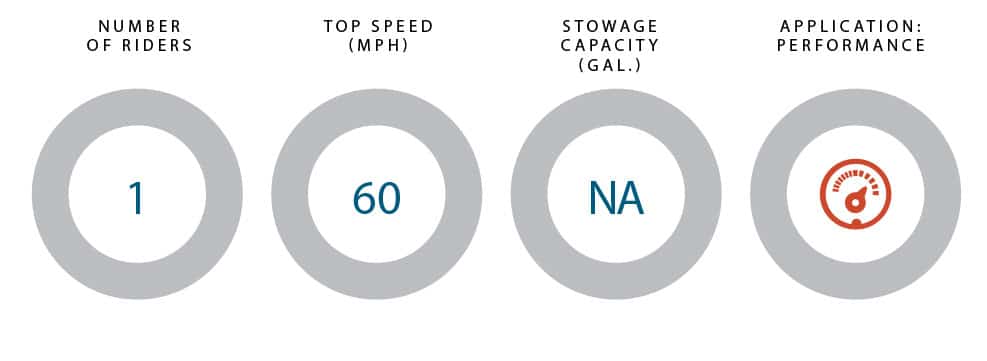
How We Tested
Engine: Kawasaki 1,498 cc inline four-cylinder four-stroke
Drive/Prop: 148 mm high-pressure pump with stainless-steel impeller
Gear Ratio: 1.00:1
Fuel Load: 6 gal.
Crew Weight: 155 lb.
More Information
Kawasaki – Santa Ana, California; 866-802-9381; kawasaki.com

